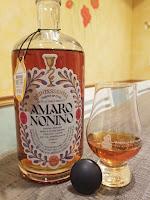Amaro translates to “bitter” in Italian, but the category of bittersweet herbaceous liqueurs is far from one-note. It spans a range of flavors and styles, from light and citrusy Aperol to bracing and minty Fernet-Branca, not to mention countless artisanal brands you may have never heard of. An amaro is a bittersweet herbal liqueur that is made by infusing an alcoholic base, such as a neutral spirit, grape brandy, or wine, with botanical ingredients that include herbs, citrus peels, roots, spices, and flowers; the exact recipes are often closely held secrets. The resulting liquid is sweetened and then aged. Amari (the plural of amaro) can be produced anywhere, but they’re a cornerstone of Italian culture. Monasteries started making bittersweet liqueurs as far back as the 13th century, touting their healing properties and digestive benefits, and in the 1800s Italian producers such as Averna and Ramazzotti took amari to the masses. Today, amari are most often sipped as pre-dinner aperitivi to whet the appetite or post-dinner digestive to aid in digestion. -- Audrey Morgan, Liquor.com
 We are staying within the Herbal Liqueurs category and moving to the Italian specialty: Amaro. And the gold standard starts with the Amaro Nonino Quintessentia®.
We are staying within the Herbal Liqueurs category and moving to the Italian specialty: Amaro. And the gold standard starts with the Amaro Nonino Quintessentia®.The Grappa Nonino Distillery was founded in 1897 by Orazio Nonino in the Friuli region of Italy and has run through six generations as Benito and Giannola passed control over to their three daughters Cristina, Antonella, and Elisabetta (the 5th generation). And the 6th generation has already made an impact with Cristina's daughter Francesca taking a role in the family operations.
In 1933, Antonio Nonino (the third generation) starts producing Nonino liqueurs like the Amaro Carnia, an infusion of herbs from the mountains of Friuli, using the grappa as the base. In 1940, "Silvia Nonino – Antonio’s wife and an excellent cook – left a widower and becomes the first woman to manage a distillery; her great knowledge of botanicals leads her to create the 'Aperitivo Bianco Nonino', a drink for the pleasure of the palate and the spirit. It is the first time that in the distillery they experience the female touch in the art of liqueurs and distillation. Silvia will be the first of a long series of Nonino woman distillers". During her tenure Silvia also enriches the recipe of the Amaro Carnia, with selected botanicals, to create a more complex amaro: Amaro del Friuli.
 In 1973, Benito (4th generation) and Giannola Nonino started a worldwide distilling trend by introducing the very first single variety grappa -- Nonino Monovitigno, made from Picolit - an indigenous grape from the Nonino distillery's home region of Friuli Venezia Giulia. The concept was revolutionary because suppliers traditionally combined the pomace (the post-pressed pulpy matter of grape skins, flesh, seeds, and stems) for all grape varieties into the same bins. The combined pomace was usually then fermented and distilled into grappa. And most winemakers were reluctant to change this process until Giannola recruited the wives to separate the varieties in exchange for higher payments.
In 1973, Benito (4th generation) and Giannola Nonino started a worldwide distilling trend by introducing the very first single variety grappa -- Nonino Monovitigno, made from Picolit - an indigenous grape from the Nonino distillery's home region of Friuli Venezia Giulia. The concept was revolutionary because suppliers traditionally combined the pomace (the post-pressed pulpy matter of grape skins, flesh, seeds, and stems) for all grape varieties into the same bins. The combined pomace was usually then fermented and distilled into grappa. And most winemakers were reluctant to change this process until Giannola recruited the wives to separate the varieties in exchange for higher payments.In 1992, the distillery replaced grappa in the recipe of the family amaro with ÙE® Grape distillate aged for a minimum of 12 months in barriques and small casks. This grape distillate was created by Giannola and Benito in 1984 using a discontinuous distillation* process in copper steam stills. This Amaro was also rebranded as Amaro Nonino Quintessentia®. The ancient family recipe still uses herbs from the mountains of Friuli and the grape distillate is usually a blend of Ribolla Gialla, Moscato, and Malvasia grape pomace. The Quintessentia® is packaged in an old pharmacy bottle at 70 proof.
This is a lighter-bodied and friendly liqueur showing citrus and forest herbs. Our bartender friends love its suitablility in cocktails like the Paper Plane. Cheers.
The Paper Plane
3/4 ounce bourbon
3/4 ounce Aperol
3/4 ounce Amaro Nonino Quintessentia
3/4 ounce lemon juice, freshly squeezed
* Discontinuous distillation means that at the end of each "batch", or distillation cycle, the distilled grape-pomace is unloaded from the cauldrons and replaced with other fresh grape-pomace ready to be distilled. Therefore, between each cycle of distillation, it is necessary to stop the process to allow loading and unloading. The "discontinuous" method represents the historic and artisan system to produce Grappa and is not to be confused with the industrial "continuous" method.
